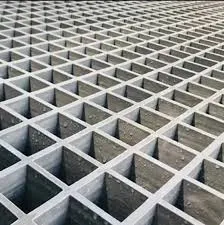
-
 Afrikaans
Afrikaans -
 Albanian
Albanian -
 Amharic
Amharic -
 Arabic
Arabic -
 Armenian
Armenian -
 Azerbaijani
Azerbaijani -
 Basque
Basque -
 Belarusian
Belarusian -
 Bengali
Bengali -
 Bosnian
Bosnian -
 Bulgarian
Bulgarian -
 Catalan
Catalan -
 Cebuano
Cebuano -
 China
China -
 China (Taiwan)
China (Taiwan) -
 Corsican
Corsican -
 Croatian
Croatian -
 Czech
Czech -
 Danish
Danish -
 Dutch
Dutch -
 English
English -
 Esperanto
Esperanto -
 Estonian
Estonian -
 Finnish
Finnish -
 French
French -
 Frisian
Frisian -
 Galician
Galician -
 Georgian
Georgian -
 German
German -
 Greek
Greek -
 Gujarati
Gujarati -
 Haitian Creole
Haitian Creole -
 hausa
hausa -
 hawaiian
hawaiian -
 Hebrew
Hebrew -
 Hindi
Hindi -
 Miao
Miao -
 Hungarian
Hungarian -
 Icelandic
Icelandic -
 igbo
igbo -
 Indonesian
Indonesian -
 irish
irish -
 Italian
Italian -
 Japanese
Japanese -
 Javanese
Javanese -
 Kannada
Kannada -
 kazakh
kazakh -
 Khmer
Khmer -
 Rwandese
Rwandese -
 Korean
Korean -
 Kurdish
Kurdish -
 Kyrgyz
Kyrgyz -
 Lao
Lao -
 Latin
Latin -
 Latvian
Latvian -
 Lithuanian
Lithuanian -
 Luxembourgish
Luxembourgish -
 Macedonian
Macedonian -
 Malgashi
Malgashi -
 Malay
Malay -
 Malayalam
Malayalam -
 Maltese
Maltese -
 Maori
Maori -
 Marathi
Marathi -
 Mongolian
Mongolian -
 Myanmar
Myanmar -
 Nepali
Nepali -
 Norwegian
Norwegian -
 Norwegian
Norwegian -
 Occitan
Occitan -
 Pashto
Pashto -
 Persian
Persian -
 Polish
Polish -
 Portuguese
Portuguese -
 Punjabi
Punjabi -
 Romanian
Romanian -
 Russian
Russian -
 Samoan
Samoan -
 Scottish Gaelic
Scottish Gaelic -
 Serbian
Serbian -
 Sesotho
Sesotho -
 Shona
Shona -
 Sindhi
Sindhi -
 Sinhala
Sinhala -
 Slovak
Slovak -
 Slovenian
Slovenian -
 Somali
Somali -
 Spanish
Spanish -
 Sundanese
Sundanese -
 Swahili
Swahili -
 Swedish
Swedish -
 Tagalog
Tagalog -
 Tajik
Tajik -
 Tamil
Tamil -
 Tatar
Tatar -
 Telugu
Telugu -
 Thai
Thai -
 Turkish
Turkish -
 Turkmen
Turkmen -
 Ukrainian
Ukrainian -
 Urdu
Urdu -
 Uighur
Uighur -
 Uzbek
Uzbek -
 Vietnamese
Vietnamese -
 Welsh
Welsh -
 Bantu
Bantu -
 Yiddish
Yiddish -
 Yoruba
Yoruba -
 Zulu
Zulu
frp stub flange
Understanding FRP Stub Flanges A Comprehensive Overview
Fiberglass Reinforced Plastic (FRP) has emerged as a pivotal material in various industrial applications due to its unique combination of strength, durability, and resistance to corrosion. Among the many components fabricated from FRP, the stub flange holds significant importance, especially in pipe systems. This article will delve into the nature, applications, and advantages of FRP stub flanges.
Understanding FRP Stub Flanges A Comprehensive Overview
One of the key benefits of using FRP materials for stub flanges is their exceptional resistance to corrosion. Unlike traditional metal flanges that may corrode over time due to exposure to harsh chemicals or environmental factors, FRP stub flanges maintain their integrity and functionality. This characteristic makes them particularly suitable for industries like chemical processing, wastewater treatment, and marine applications, where exposure to corrosive substances is commonplace.
frp stub flange

Furthermore, the lightweight nature of FRP contributes to easier handling and installation compared to metal alternatives. This lightweight characteristic not only reduces transportation costs but also minimizes the structural load on supporting structures. As a result, engineers and contractors often prefer FRP stub flanges for projects that demand both durability and efficiency.
Another notable advantage is the low thermal conductivity of FRP materials. This property helps in reducing heat loss in piping systems, making them more energy-efficient. Additionally, FRP stub flanges can be customized to fit specific project needs, ensuring compatibility with existing pipe systems and enhancing overall system performance.
In conclusion, FRP stub flanges represent a robust solution to modern piping challenges, offering a reliable and efficient means of connection in various industrial applications. Their corrosion resistance, lightweight properties, and energy efficiency make them an integral component in today’s engineering endeavors. As industries continue to seek sustainable and durable materials, the importance of FRP will likely continue to grow, elevating the role of stub flanges in future applications.









